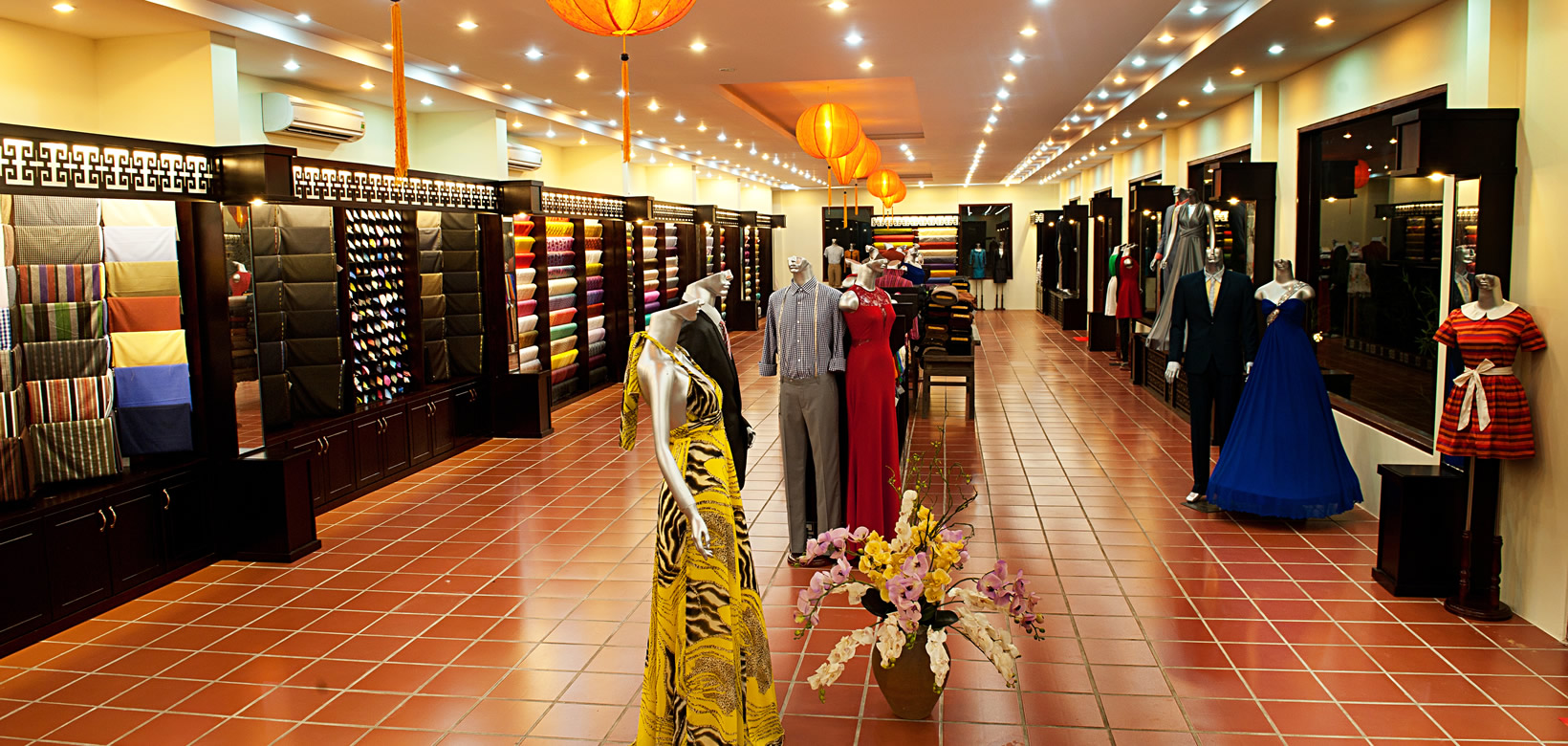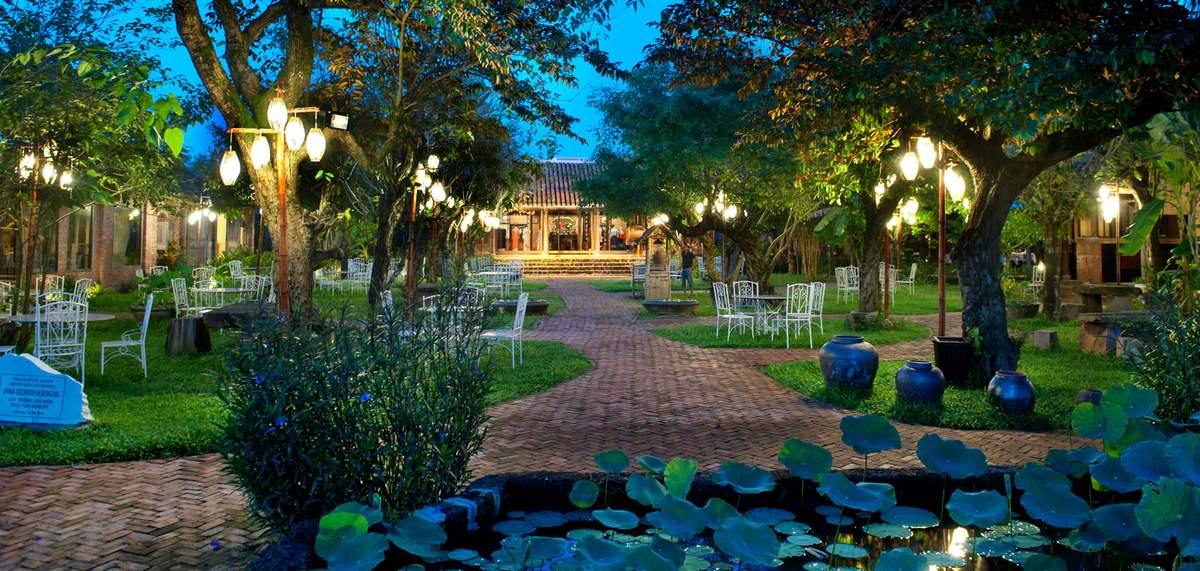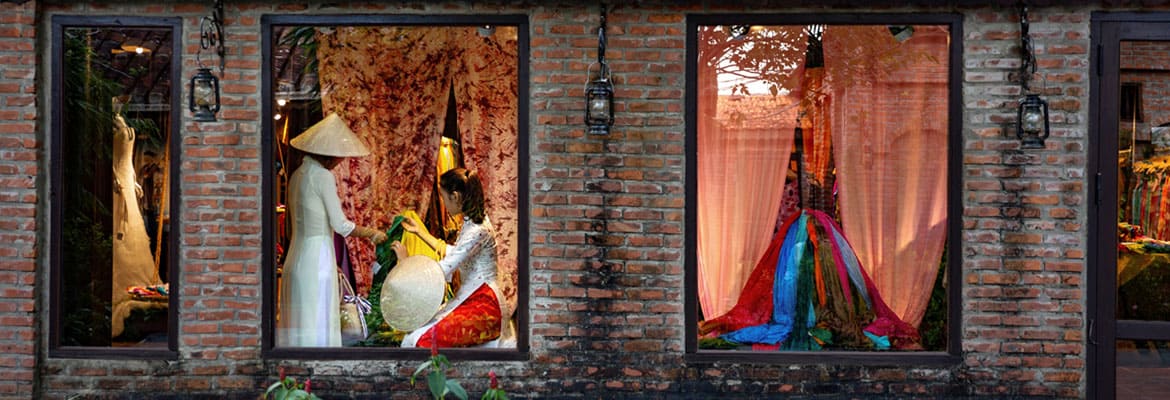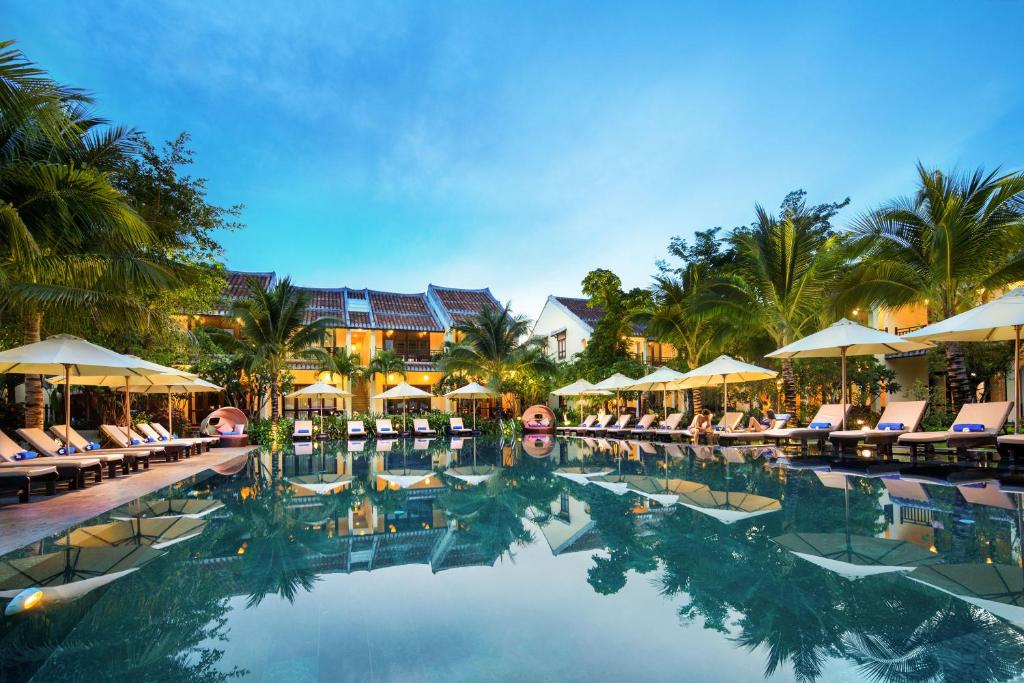The beauty of Vietnamese culture, traditional silk-production process, and delicious cuisine are definitely the reasons why you have to visit Hoi An Silk Village. Find out what is waiting for you in your dream vacation here.
Hoi An Silk Village is a must-see in the trip to discover nature, life and people across Central Vietnam, especially Hoi An. Not only is the silk village the only location with valuable genetic sources of mulberry, it also preserves the handmade silk-weaving method from the Champa – Dai Viet era.

1. About Hoi An Silk Village Vietnam
1.1. Where is Hoi An Silk Village?
Located at 28 Nguyen Tat Thanh, Hoi An, Quang Nam Province, Hoi An Silk Village displays and maintains the tradition of silk weaving. Facing the gradual decline of the craft, Quang Nam Silk Joint Stock Company has restored the craft village, which is becoming an attractive destination for tourists.

Preserving the local traditional values, the village helps tourists learn about the origin of the Maritime Silk Road in the 17th century.
Additionally, while visiting the village, you can also learn about the process to produce soft silk. This process, from growing mulberries, raising silkworms to reeling and weaving silk, will be recreated in the most specific and realistic manner. There are also restaurants, hotels, and galleries in the area. Visitors will be able to sightsee, relax or shop around while staying in Hoi An.

The silk village is not too far from Hoi An ancient town, only about 1 kilometer away. Tourists can travel by cyclo or bicycle. You could also go on foot and enjoy the scenery on the way. If the streets are not too crowded, a viable option is to rent motorbikes and also visit other attractions near Hoi An such as Bay Mau coconut forest or An Bang beach.
1.2. How much is Hoi An Silk Village’s ticket price?
Hoi An Silk Village is an ideal tourist attraction for many visitors. The village opens from 8 AM to 9 PM. To visit and explore the once famous craft village, tourists should spend 50,000 VND for a ticket. During the tour, you can also enjoy an excellent buffet for 300,000 VND at the village.
2. What are the highlights of the trip to Hoi An Silk Village?
As the only place endowed with precious genetic sources of mulberry, the village attracts a large number of visitors. It also preserves the method of silk weaving from the Champa – Dai Viet era. While visiting the silk village, you will be able to see antiquated looms, which are the tools to produce top-quality silk.

2.1. Visit the traditional ruong house of the village
Inside the silk village, tourists can visit the traditional ruong house of Hoi An. However, there are only the remains of the original house which were collected and brought to Hoi An for display.
The ruong house occupies a vast space. In the middle, there is a temple dedicated to Mrs. Doan Thi Ngoc, who greatly contributed to preserving and developing the traditional craft of silk weaving. She was also the first person to introduce Hoi An silk to the world.

2.2. Admire Ao Dai and the traditional costumes of 54 ethnic groups
The traditional house at Hoi An Silk Village displays a wide range of silk products, especially an Ao Dai collection of 54 ethnic groups across Vietnam. Currently, there are about 100 sets of Ao Dai showing the cultural development of Vietnam through its 3000-year history. Until now, these products are still considered as the most prominent symbols of the charm and delicacy of Vietnamese women.

The traditional costumes of the 54 ethnic groups clearly reflect the variety in culture in Vietnam. The exhibition is excellently and scientifically set up. Thanks to this, the silk village is attracting both domestic and international visitors, popularizing Vietnamese cultural values.
2.3. Explore the ancient mulberry garden
At Hoi An Silk Village, tourists can visit the ancient mulberry tree which dates back to the Champa period. The tree was brought from Que Son to the silk village in 2012. It has a wide canopy and is more than 10 meters high. What makes this tree special is that its leaves have the shape of a crow’s foot.Apart from the ancient mulberry tree, visitors will be able to learn about the gourd mulberry of Quang Nam. This type of mulberry requires a substantial level of care. In order to harvest lots of its leaves, people have to carry out pruning depending on the season. Every year, there will be enough mulberry leaves to provide for 8 generations of silkworms.

2.4. Stop by the showroom of silk products
The showroom displays various silk products of different colors and styles. Visitors can also try on silk clothes made by the prestigious artisans and learn to weave silk on traditional wooden handlooms. This will undoubtedly be an interesting and unique experience at Hoi An.

2.5. Enjoy Hoi An delicacies in a buffet restaurant
The final destination on the journey to discover Hoi An Silk Village is a buffet restaurant. The restaurant is designed with open space, appealing Vietnamese decoration and serves a variety of Hoi An well-known dishes.

A highlight of this restaurant is that all of the waitresses are required to wear a traditional costume called the “South Vietnamese Pajamas”. The whole place seems to have the vibe of a traditional marketplace in the Vietnamese countryside

